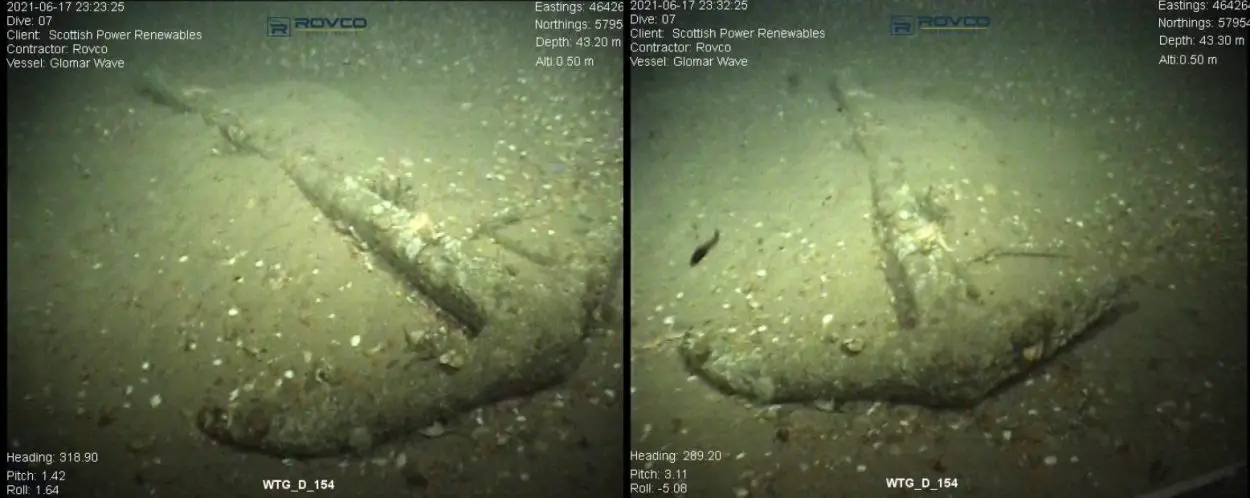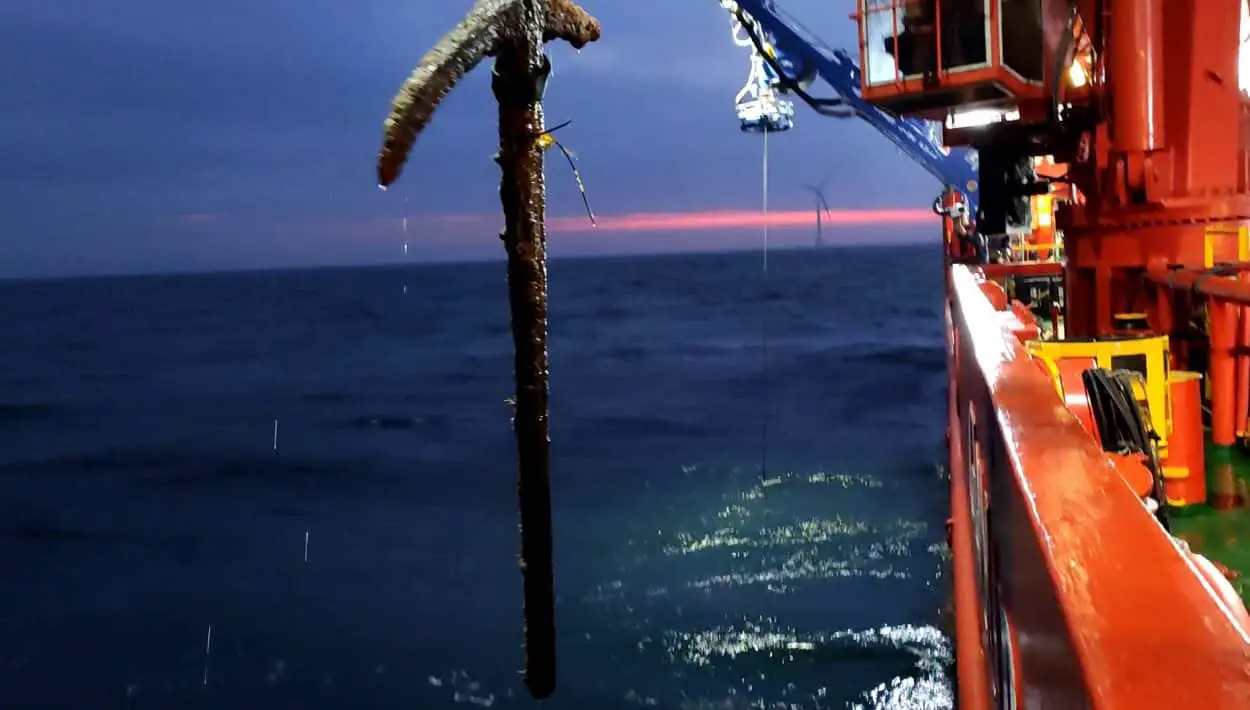An ancient anchor made from wrought iron has been discovered off the coast of England at the bottom of the North Sea during survey works for an offshore windfarm by ScottishPower.
The anchor is a rare example from roughly 1,600-2,000 years ago during the Roman or possibly the Iron Age period.
Several features on the anchor are comparable with anchors used on ships from the Roman Imperial Roman period and most likely came from a large merchant ship in the Roman fleet, providing material evidence of seafaring and trading of the period. More than 2 metres long and weighing in at around 100kg, the anchor is estimated to have come from a 500-600 tonnes vessel.
The Classis Britannica was the regional fleet of the Roman province of Britannia and the first navy of Britain. Although very little physical maritime evidence has been discovered, it operated from the mid first century to the mid-third century AD.

The role of the navy was to provide coastal support to land forces, such as Agricola’s campaign into Caledonia (Scotland), where the Classis would have scouted the coastline and resupplied the advancing legions as they pressed further north into tribal territories, establishing forts and temporary encampments.
In the final years of Roman rule in Britannia, the fleet was devoted almost entirely to protecting the Eastern and Southern coasts against Frankish pirates, and Saxon raids against coastal settlements known as the Saxonicum or Saxon Shore.
The anchor was first discovered in 2018 thanks to marine seabed survey works being undertaken by ScottishPower Renewables prior to the construction of its East Anglia ONE offshore windfarm, located around 40km off the coast of Suffolk.
Currently undergoing detailed imaging and analysis to better pinpoint its age and provenance, the anchor will be on display at Ipswich Museum briefly before being taken back to the laboratory. Once the analysis and conservations works are complete, this will allow the anchor to go on permanent display in conjunction with Colchester + Ipswich Museums.
Header Image Credit : Scottish Power





